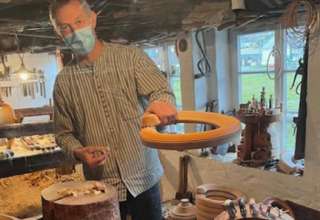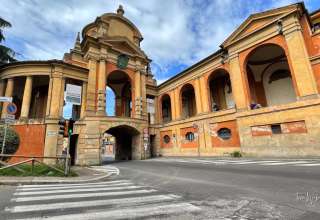In this pristine town of the Veneto, the art of Italian benessere is well-defined as centuries-old cures continue to soothe the body, mind and nasal passages of countless Europeans.
Embraced by the verdant Euganean Hills, an archipelago of conical-shaped peaks dating back some 35-million years, the thermal baths of Abano Terme, just 54 km southwest of Venice, form the oldest and largest benessere (wellness) center in Europe and, arguably, the world. Specializing in fango-balneotherapy, La Città Termale (The Thermal City) has an ancient, mythical past.
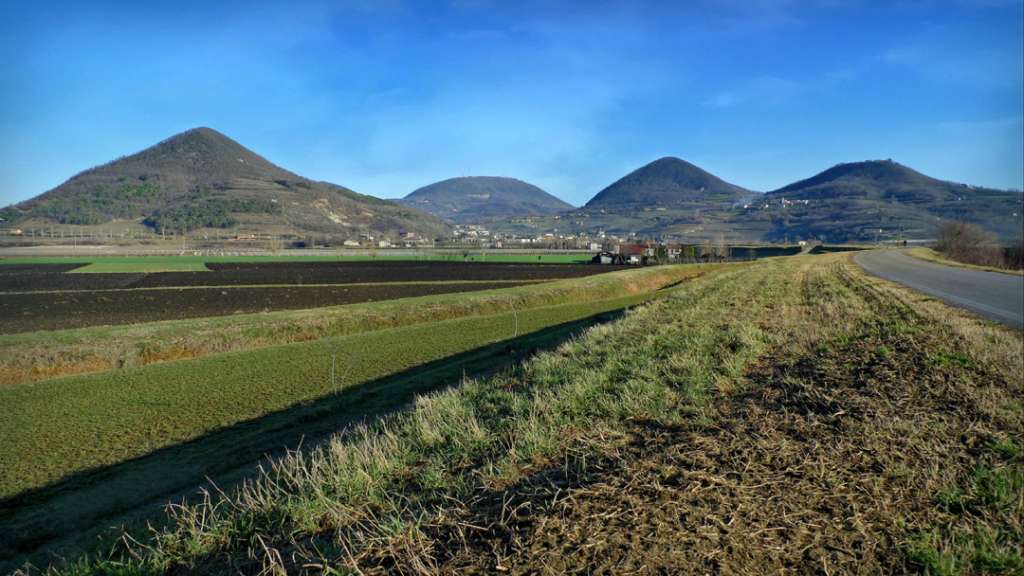
A blend of marshland and forest, sulfulreous waters sprang spontaneous millennium ago in bubbling, cauldron-like springs, creating a lake that covered the near earth as far as the eye could see. A phenomenon of extraordinary proportions, this à ponus (Greek for relieving pain) reservoir, considered divine in origin, played host to cult ceremonies, complete with sacrifices offered up to Aponus, the god of thermal and curative water, and from whom Abano Terme derives its name.
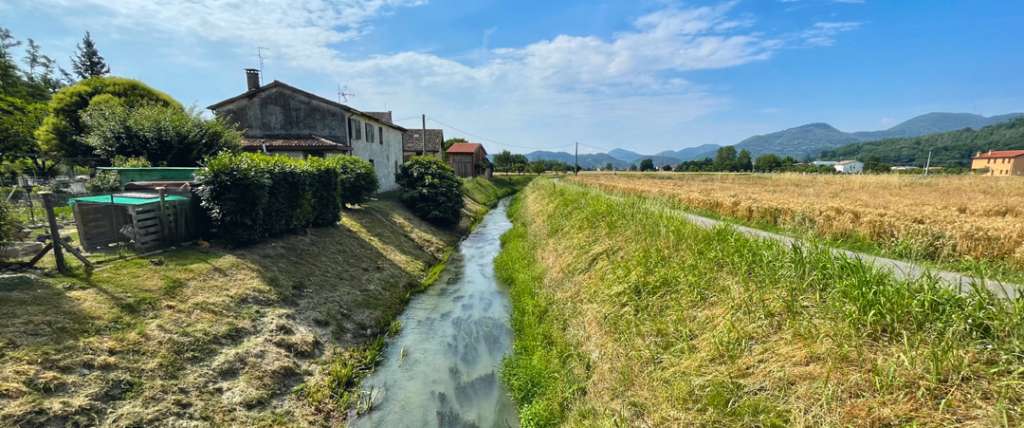
Legend also has it that Hercules himself and his warriors soothed their battle-weary bodies in the miraculous waters in the land of Aponus. Many late-antiquity literary sources confirmed the fame of the fons Aponi during the imperial period of the Roman Empire, including Claudius Claudian, a 4th century AD poet, who waxed:
“…The soft soil sighs, and closed beneath the boiling pumice the wave digs flaky roads. In its midst, like a widespread boiling sea, a blue lake extends, spinning greatly, covering an enormous area.”
Geologically and geothermically speaking, these deep, underground spa waters originate some 80 km north up in the Lower Dolomites, seeping into the subsoil through the limestone. Reaching a depth of 3,000 m, where temperatures rise and the pressure increases dramatically, the mercurial water begins its slow — 25-30 years — flow until it bubbles up, at 87°C, in the Euganean spa basin. Rich in geothermal energy, dissolved substances and minerals make the spa water of Abano a truly unique thermal resource. Scientifically classified as hyperthermal bromo-iodine-salt water, these spa springs are just what the doctor ordered to treat a plethora of ailments, from skin conditions to osteoarthritis.
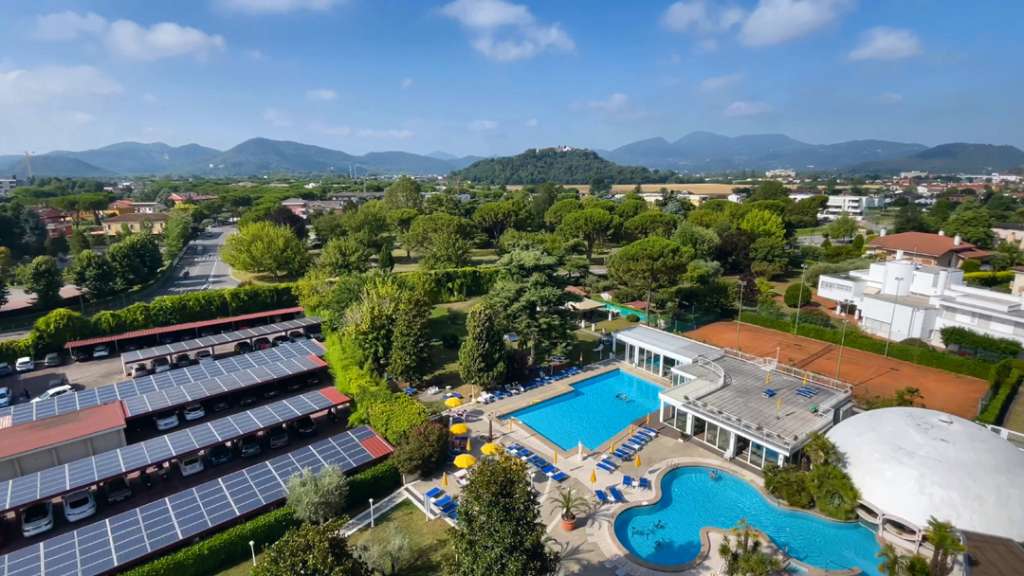
With over 75 spa-wellness hotels, 120 swimming pools, 50 tennis courts, a golf training center, an equestrian center and riding school, leafy residential streets, historical villas, loads of parks and gardens, haute cuisine and couture, and access to a network of cycling-walking-trekking paths and hiking and horseback trails, Abano is able to attract more than 250,000 overnight guests a year with an additional 2 million visitors stopping long enough during a calendar year to be statistically counted.
Thermal waters and therapeutic mud aside, what else attracts the curious to the city limits of this 20k+ person town?
For starters, its array of accommodations. Each of Abano Terme’s benessere hotels — from three-star comfort to five-star luxury, with half and full-pension options — taps directly into the rare, underground spa source, providing its guests with medically and professionally-monitored therapies and aesthetic treatments: from balneotherapy to fangotherapy, from hydrokinesitherapy to inhalation treatments, along with an array of beauty and relaxation programs. All fully recognized spa-wellness resorts are classified with the “I Super” qualification issued by the Italian Ministry of Health, guaranteeing your peace of mind.
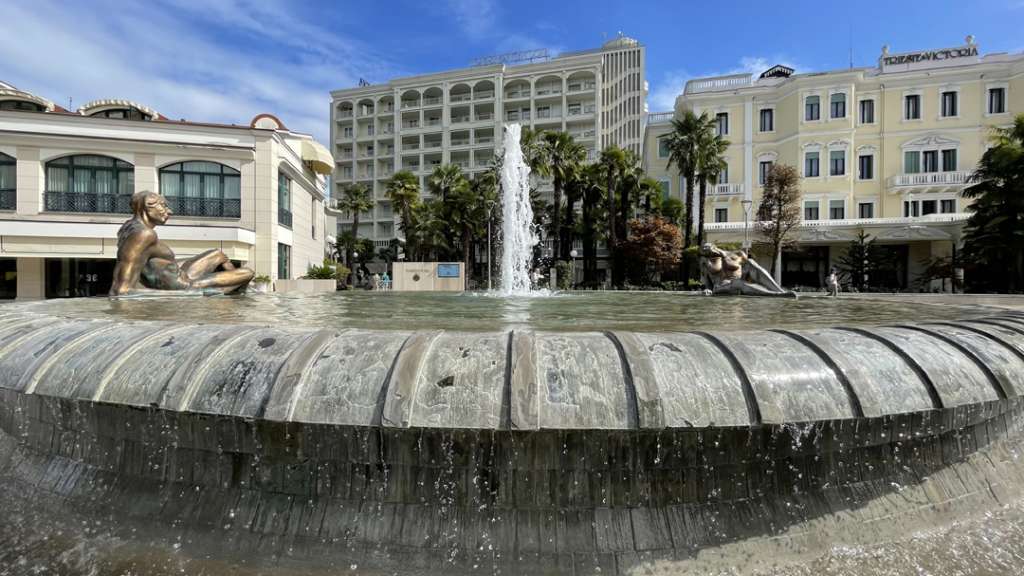
The care and concern go even further at the Pietro d’Abano Spa Study Center — named in honor of Abano’s revered late 13th, early 14th century physician, philosopher, astrologer and alchemist — as experts continuously analyze and monitor the spa water and carry out systematic research into spa water medicines and the effects of fangotherapy.
After a full day of lounging around in your swimsuit and the hotel-provided white, Turkish towel dressing gown and slippers — pampering yourself with long soaks in tubs and pools of hot, ozone-enriched spa water; listening to calming music overhead while encased in an Euganean mud wrap; and, having your body turned every which way but lose by a masseuse — take that new-found glow out for a stroll along Via delle Terme, Abano’s high street.
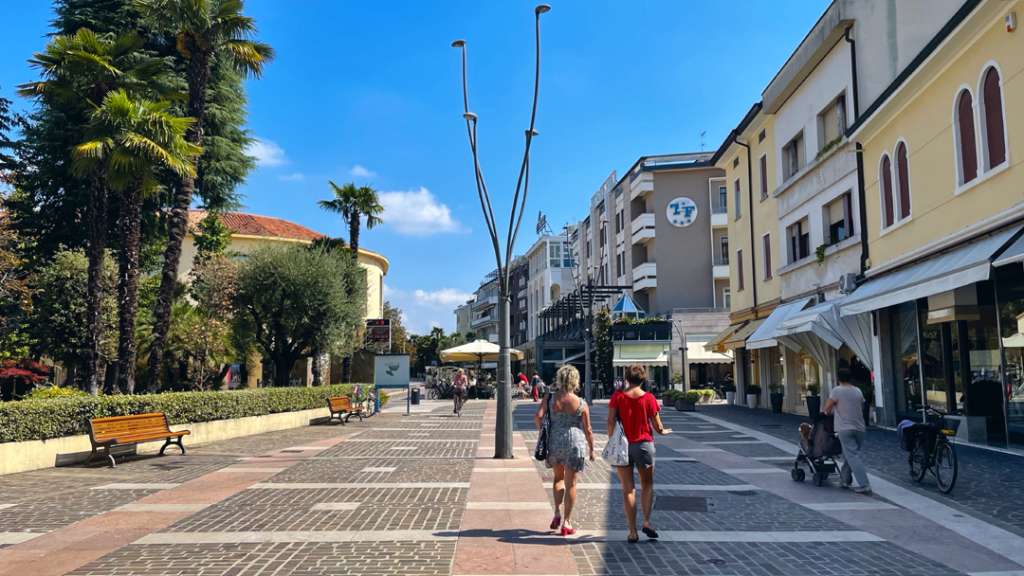
Enjoy a bit of window shopping then stop for an aperitivo — bubbly prosecco or an Aperol spritz — at one of the many, lively outdoor cafés and just people watch until the ice in your glass melts away. Now, head back to your hotel, or out to one of Abano’s white tablecloth restaurants (I highly recommend Ristorante Verbena on Via Monteortone) for a gourmet dinner accompanied with a bottle of chilled Ca’ de Frate Lugana. When that first yawn appears, call it a night, turn in and sleep well, dreaming about doing the same regime all over again.
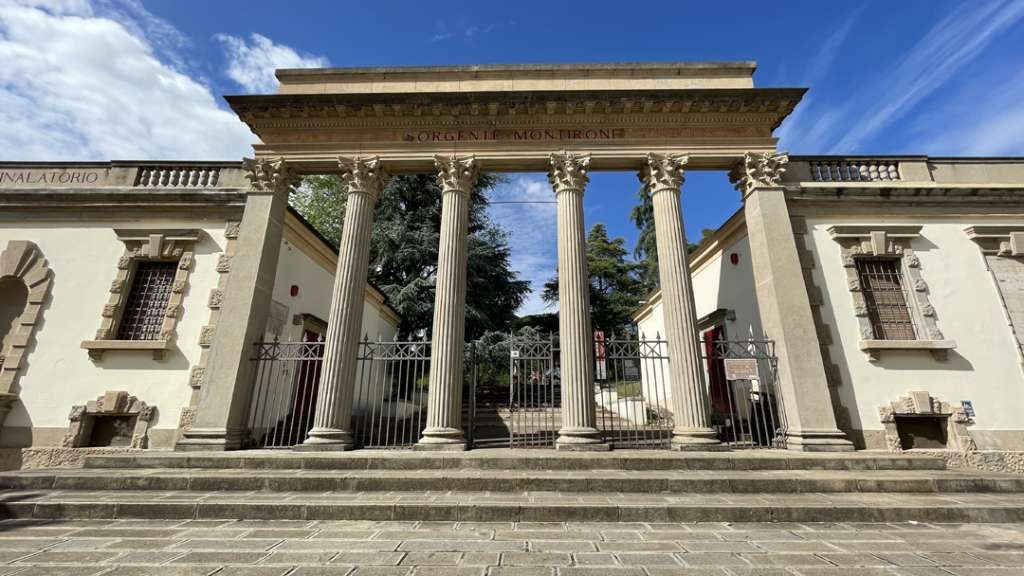
Any visit to Abano Terme should begin at the monumental entrance to Sorgente Montirone, the little park on Montirone Hill where the history of La Città Termale began. Located at the start of the pedonale (pedestrian-only walkway), at the corner of Via Augure and Via d’Abano, the Corinthian colonnaded gate leads you back in time to the very source from which the underground spa waters first bubbled to the surface.
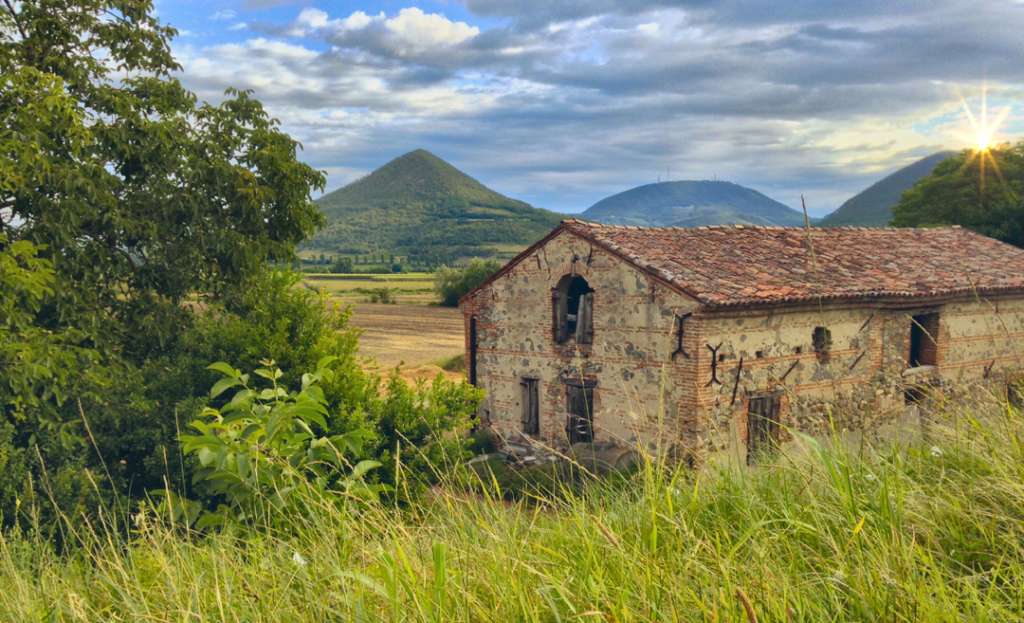
It stands to reason that a town built solely around thermal-fired H2O would have plenty of fountains dotting the urbanscape, and you’d be correct. Along with just about every one of the town’s spa-wellness hotels sporting a water feature of some sort near their entryway, Greater Abano’s water features stand out and are open to the public. Two of the most popular are the circular Fontana di Arlecchino (Harlequin Fountain), the centerpiece along the pedonale, and Columbus Fountain in Piazza Cristoforo Colombo, the largest sculpture in all of Europe dedicated to the Genovese explorer-navigator.
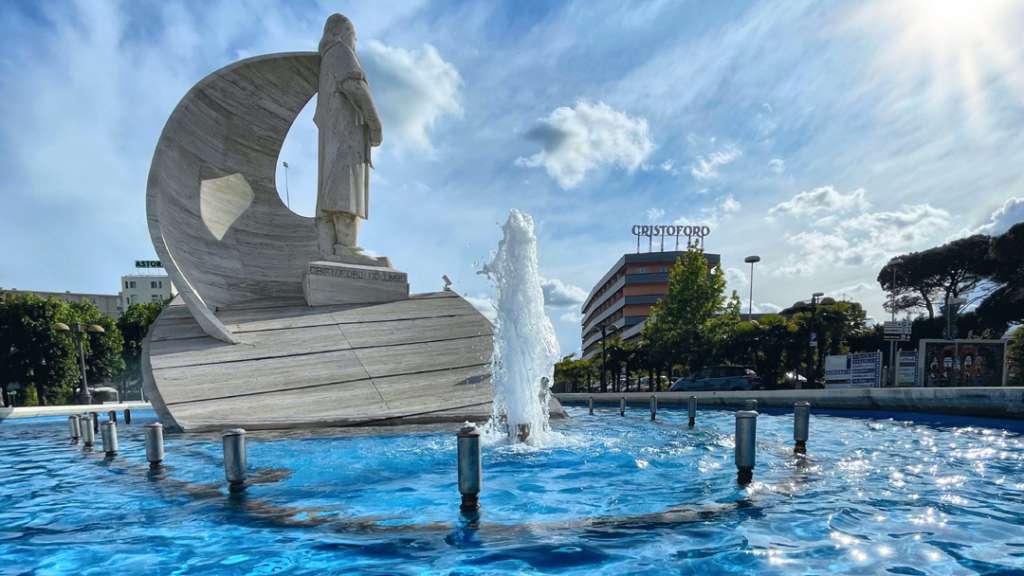
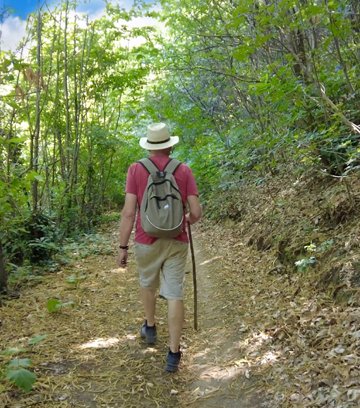
Meander with the aponese through the Parco Termale Urbano (Thermal Urban Park), a master-planned, elegant green space — designed by the late Paolo Portoghesi, the world-famous, post-modern architect — with spacious apartment living in various complexes strategically placed above, and shops, outdoor cafés, tree-lined serpentine walkways, a cycling path, a kiddie playground and countless park benches below, that magically merge together down the middle of town, like tributaries forming up in a flowing green river. Host to many of the town’s festivals and celebrations, step out at the large fountain in Piazza dei Todeschini and end your passeggiata (walk) at its identical twin fountain in Piazza Dondi dall’Orologio.
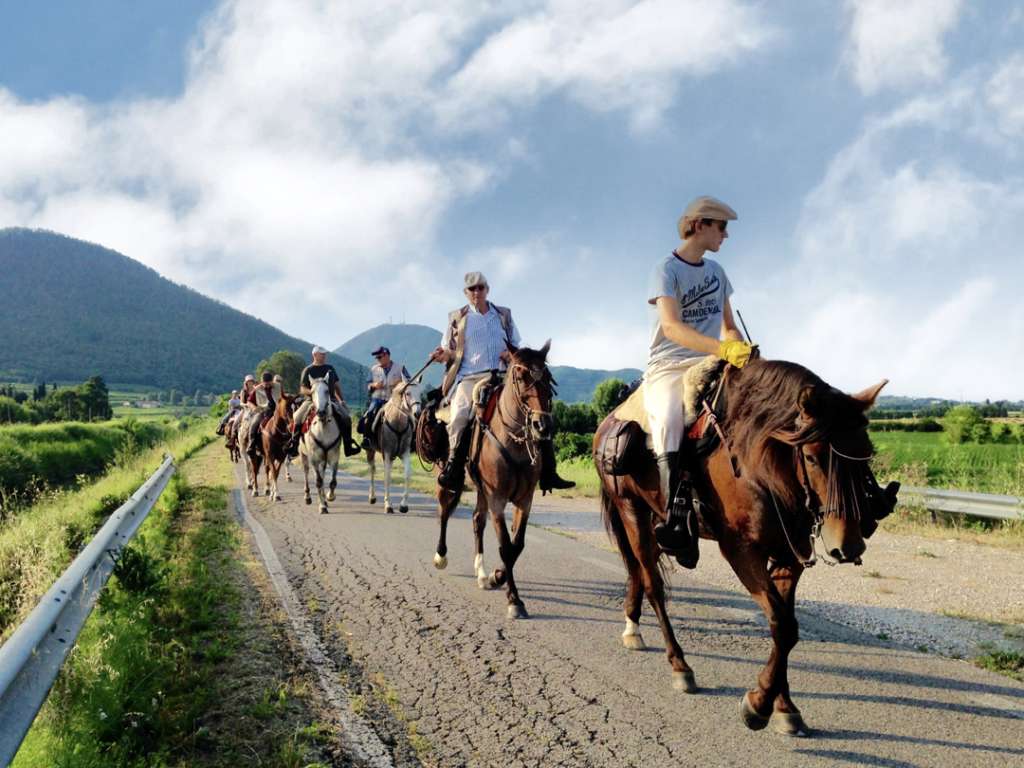
Founded in 1989, the Parco Regionale dei Colli Euganei (Regional Park of the Euganean Hills) is the very first regional park of the Veneto and the protected home to 81 prehistoric-looking peaks of volcanic origin, that rise above flat, fertile agricultural land inside an elliptical perimeter covering approximately 19k hectares and enclosing 15 towns, including Abano Terme, one of its gateway communities.
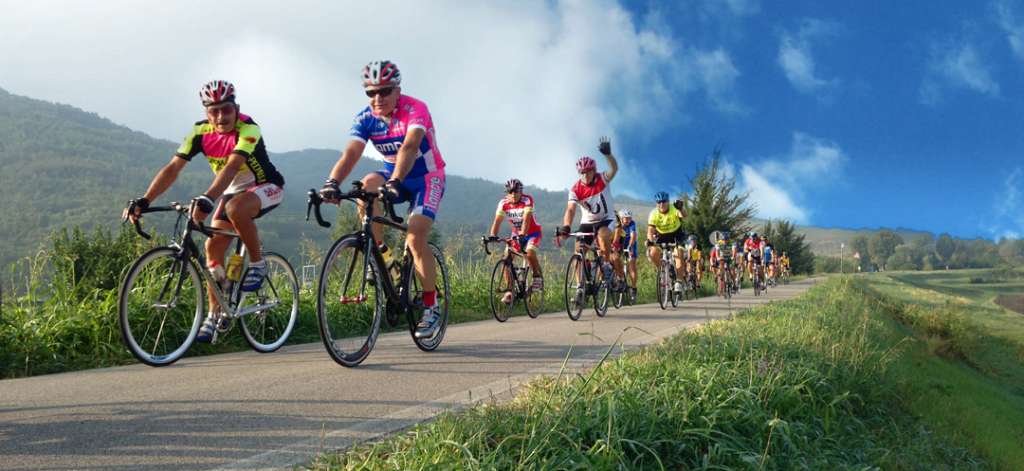
Cyclists, runners and trekkers alike take to the E2 anello, a 68 km ring that circumnavigates the regional park and passes by undulating vineyards, olive groves, wheat and corn fields, irrigation waterways, castles, noble villas of the old Venetian Republic, religious sanctuaries and monasteries of historical significance. Add to that, 31 well-marked rustic trails that meander off the ring for bumpy off-road thrills and heart-pounding uphill climbs. It’s the perfect tonic if you’re looking to explore the great outdoors. Ask your hotel concierge for the use of one of their complimentary two wheelers, a map of the E2 circuit and then start pedaling.

Osterias, trattorias and farm-to-fork agri-restaurants (al Peraretto in Faedo comes to mind) await you at the end of a long walk, a strenuous hike or a vigorous bike ride; or, spend some time traveling along the Strada del Vino Colli Euganei (Wine Road) to sample some of the prized DOC-rated varietals harvested and bottled in the hills — bubbly serprino, dry moscato, fior d’arancio, cabernet, carmenere and merlot to name but a few — and cold-pressed extra virgin olive oils, on offer at numerous cantine (wineries) and frantoi (olive mills) that dot the route.
Be Herculean, come to La Città Termale and soothe your body, mind and nasal passages. Aponos will thank you.
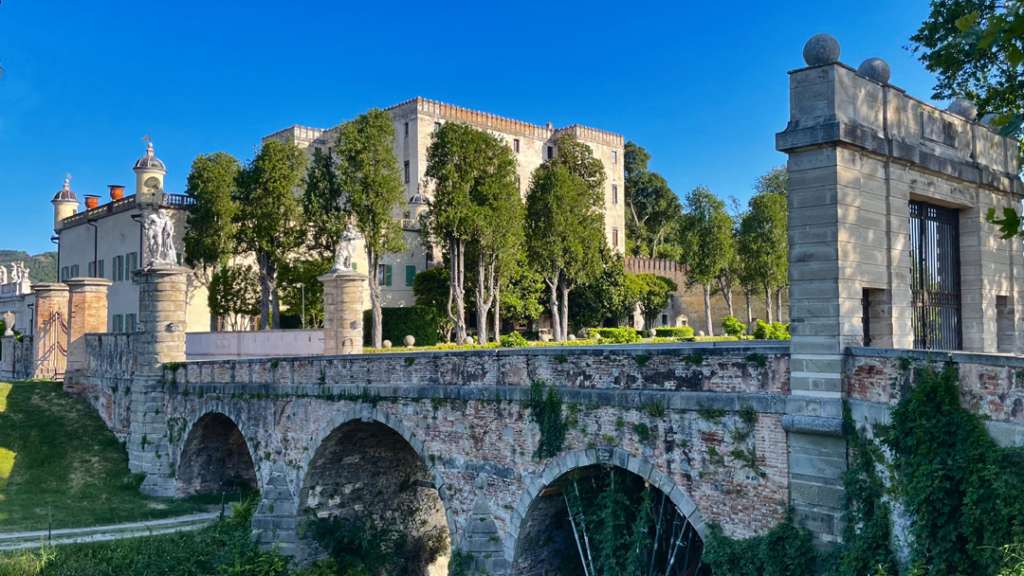
Getting here
Abano Terme is conveniently located to four international airports, two major train stations and Italy’s vast autostrada (motorway) network. By air, choose between Venice’s Marco Polo Airport (55 km), Treviso’s Sant’Angelo Airport (70 km), Verona’s Catullo Airport (90 km) or Bologna’s Marconi Airport (110 km).
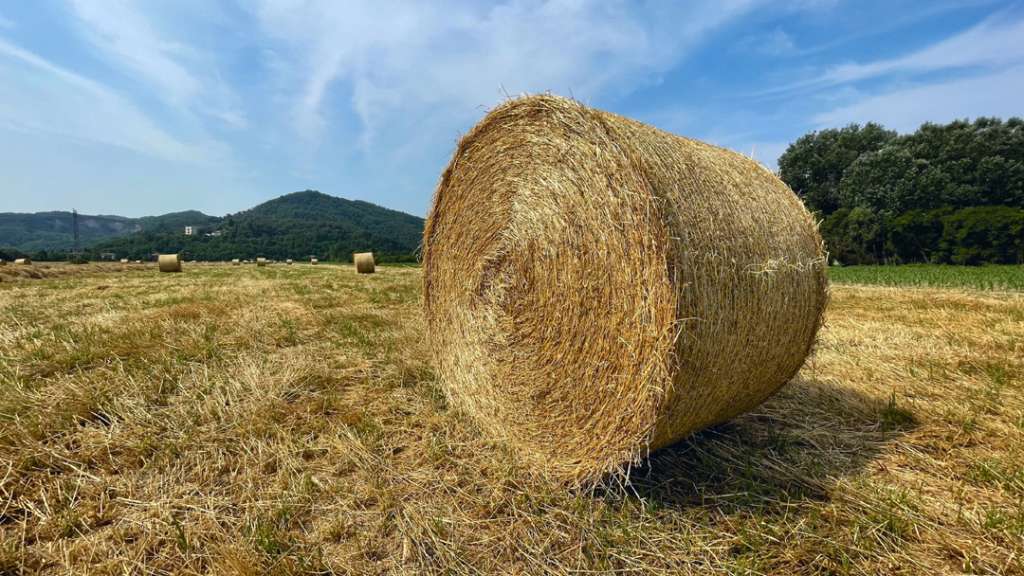
By train, the Terme Euganee station, in nearby Montegrotto Terme, is less than a ten-minute taxi ride from Abano Terme and serves as your hop-on/hop-off point for connections to/from Padova (10 min), Venice (45 min) or Bologna (70 min).
By car, driving the A13 Padova-Bologna motorway, take the “Terme Euganee” exit. Motoring in on the A4 Milano-Venezia motorway, exit at “Padova Ovest”.
For added convenience, private car or passenger van transfer service to any of the airports or train stations listed, or to plan day-trip excursions with a knowledgeable driver, can be arranged directly with A.R.T.E. Taxi Service, Tel. +39 049 667842. A one-way transfer from/to Marco Polo Airport in Venice, for example, costs €110.


